
While Pendo excels at product analytics and interactive guides, you might wonder what else is out there. Several compelling alternatives offer unique features and capabilities for streamlining the customer onboarding process. Let’s explore Pendo’s top competitors and what makes them stand out.
What’s Pendo?
Before we dive into alternatives, let’s talk about Pendo itself. After all, you can’t properly evaluate alternative options without understanding what you might be replacing.
Pendo has made quite a name for itself in product analytics and user onboarding, especially among digital product companies. What makes it stand out is its focus on data-driven decision-making and sophisticated user guidance.
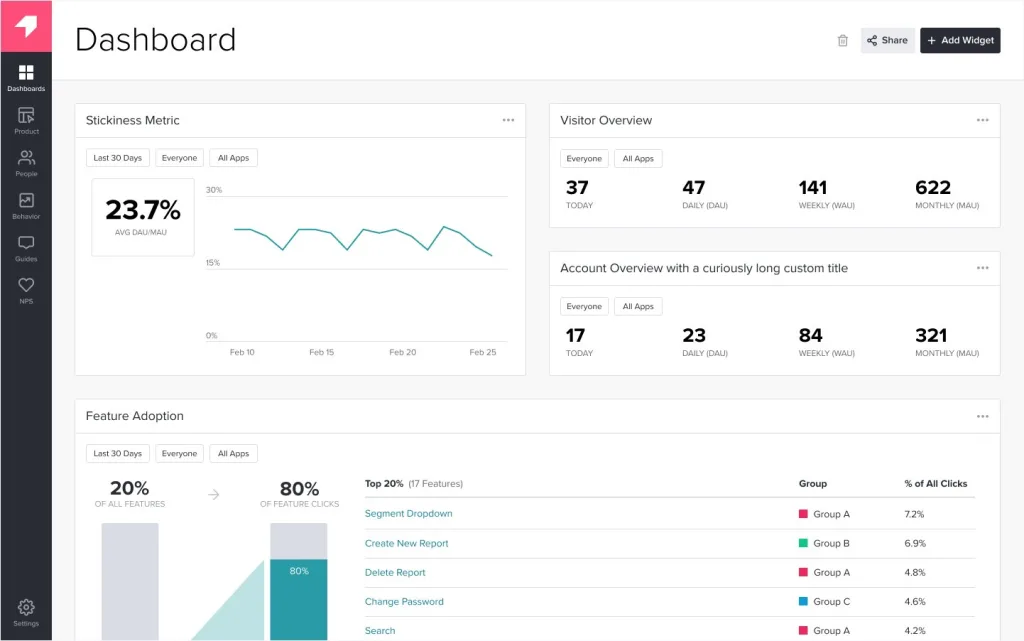
At its core, Pendo is a no-code solution that combines powerful analytics with user guidance features. Imagine seeing exactly how users interact with your product and then creating targeted guidance based on that information – that’s what Pendo does best.
Despite its strengths, Pendo isn’t perfect for everyone.
Why Consider Pendo Alternatives?
Before diving into the alternatives, it’s worth noting that Pendo is known for its strong analytical capabilities, no-code solution approach, and ability to create interactive guides and walkthroughs. However, different organizations have varying needs, budgets, and priorities.
Some users find the learning curve a bit steep, especially when it comes to making the most of the analytics features. And while the no-code approach is great, it sometimes means less flexibility for teams that want more customization options.
Exploring alternatives ensures you find the perfect fit for your specific requirements. While Pendo is an excellent tool for many organizations, you might be looking for alternatives because:
- You need something more budget-friendly
- You want simpler analytics that is easier to understand
- You’re looking for specific features Pendo doesn’t offer
- You need more customization options
- You want better integration with your existing tools.
How to Choose the Right Pendo Alternative
While Pendo is great, some alternatives offer unique features that might work even better for your needs. Most of these tools offer free trials, so you can test them out before committing. When selecting a Pendo alternative, consider the following factors:
Business Size and Scale
- Consider solutions that match your organization’s size
- Evaluate scalability needs
- Assess pricing structures
Feature Requirements
- Identify must-have features
- Compare analytical capabilities
- Evaluate integration needs
Technical Considerations
- Assess implementation complexity
- Review browser compatibility
- Consider coding requirements
Budget Constraints
- Compare pricing models
- Evaluate ROI potential
- Consider long-term costs
Support and Training
- Review available support options
- Assess training resources
- Consider implementation assistance
The Best Pendo Alternatives
Some of these alternatives take a more straightforward approach to onboarding, focusing on ease of use rather than deep analytics. Others push the boundaries with AI integration and advanced customization options. And a few manage to pack everything – analytics, customization, and ease of use – into a single platform.
FuseBase
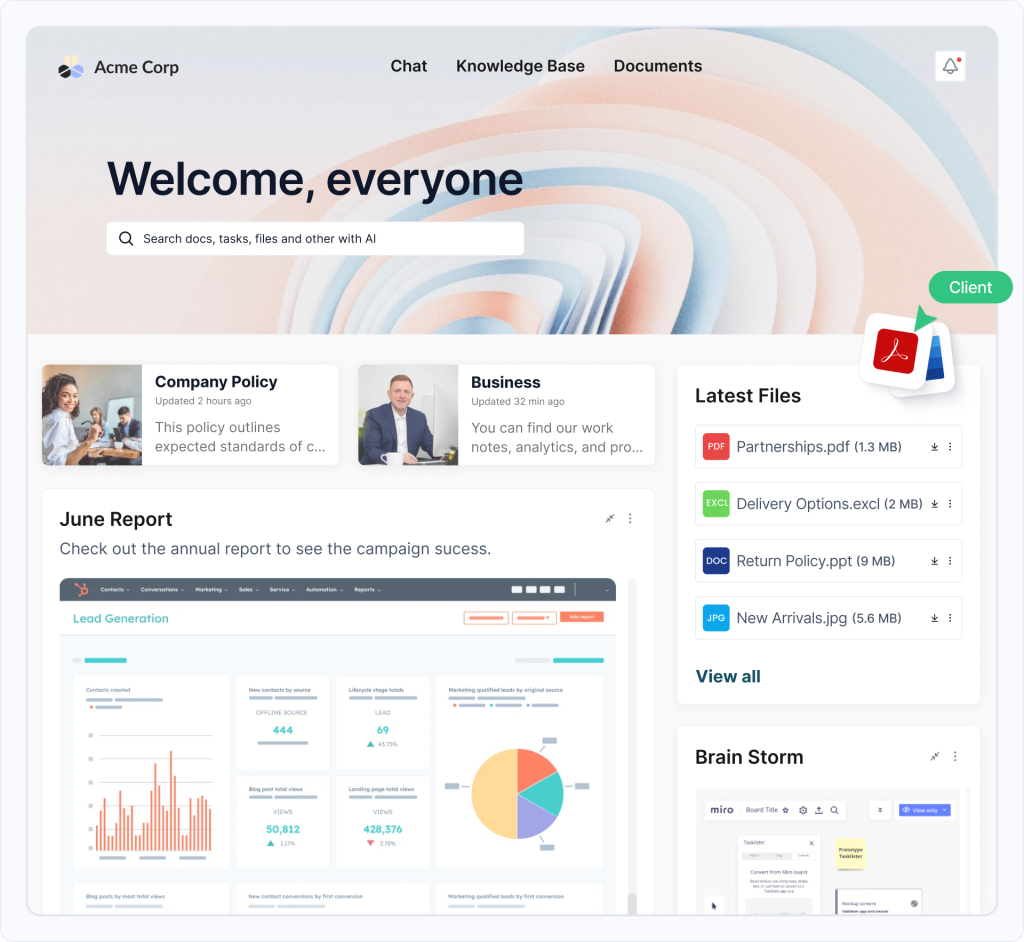
What makes FuseBase unique is how it handles content. Imagine being able to create super-powered documents that combine text, videos, images, and files all in one place. Everything works like building blocks – you can move pieces around, add background colors, create headings, and build exactly what you need.
You can create comprehensive knowledge bases that serve as a single source of truth for your team and clients. Whether you’re documenting processes, storing best practices, or creating training materials, everything stays organized and easily accessible.
The platform makes it simple to structure information in a way that makes sense for your team. You get organizations, workspaces, folders, subfolders, and pages, all neatly arranged however you want. Plus, you can tag everything, making it super easy to find what you need later.
One feature that customers love is the client portal. You can create a dedicated space for each client where you keep all their project information, updates, and approvals in one place. The best part? Your clients don’t even need an account to access what you share – just send them a link, and they’re good to go.
WalkMe
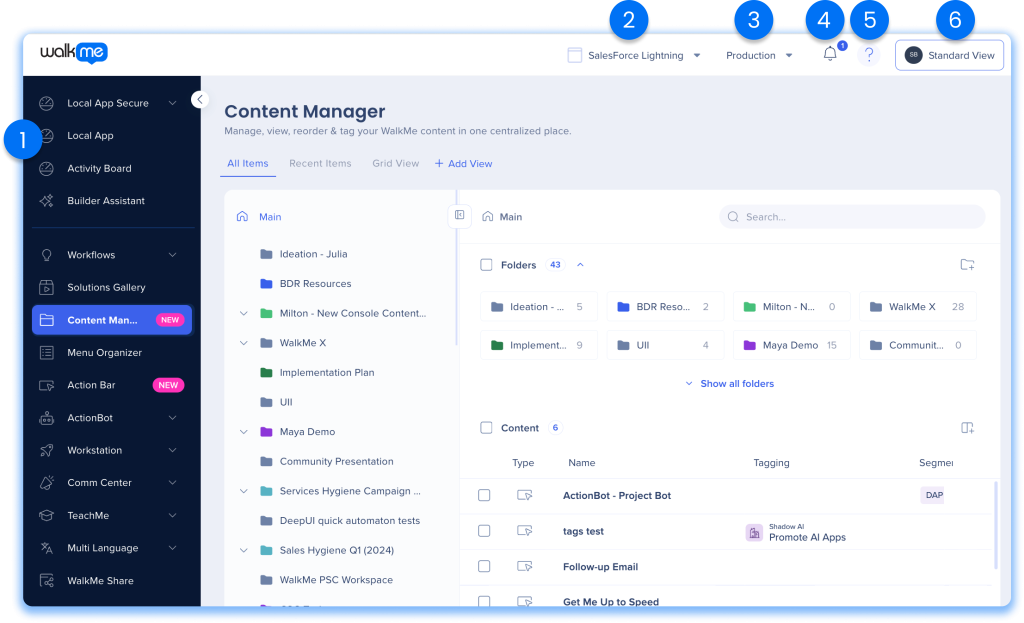
If you’re running a larger business and need something robust, WalkMe might be your answer. It’s particularly popular with large companies because it can handle complex processes while keeping things simple for users. Think of it as having a personal guide for each of your customers, showing them exactly what they need to know, right when they need to know it.
What’s cool about WalkMe is its ability to understand how your customers behave and adjust accordingly. It’s like having a smart assistant that learns from each interaction and gets better at helping your customers over time. While they don’t publicly list their prices, they offer a free trial so you can test the waters before diving in.
Whatfix
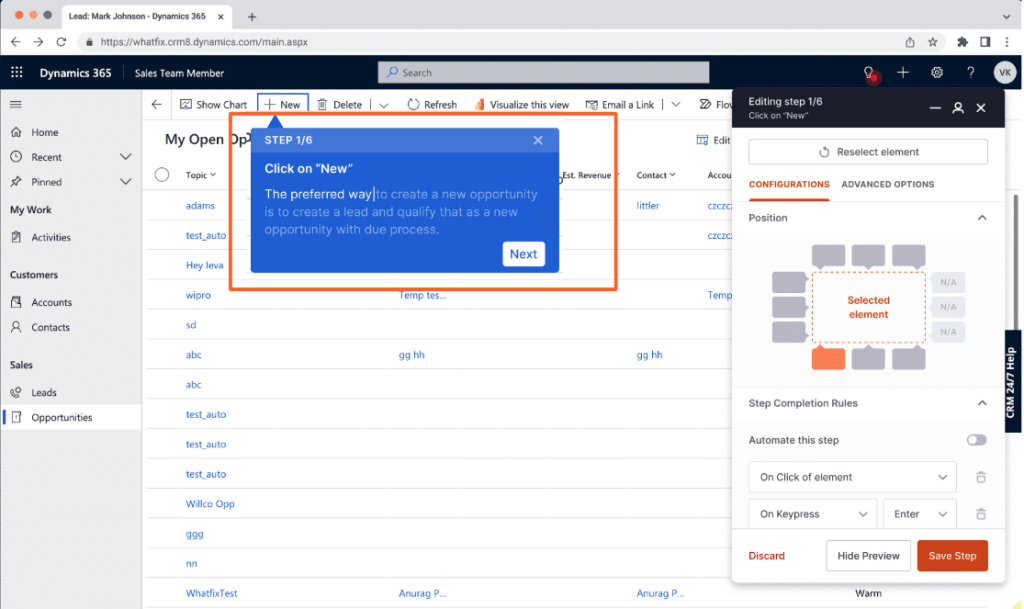
Whatfix takes a unique approach to onboarding by focusing on helping users help themselves. One of its standout features is the task list widget, which allows new users to track their progress as they learn about your product.
You can build product tours, step-by-step guides, tooltips, videos, and white papers. Whatfix is special because it delivers this content inside your app, so users never have to leave to find help.
Whatfix’s self-help feature creates a searchable wiki inside your application that connects with your FAQs, documentation, video tutorials, and knowledge base. Users can find exactly what they need without ever leaving your product.
Inline Manual
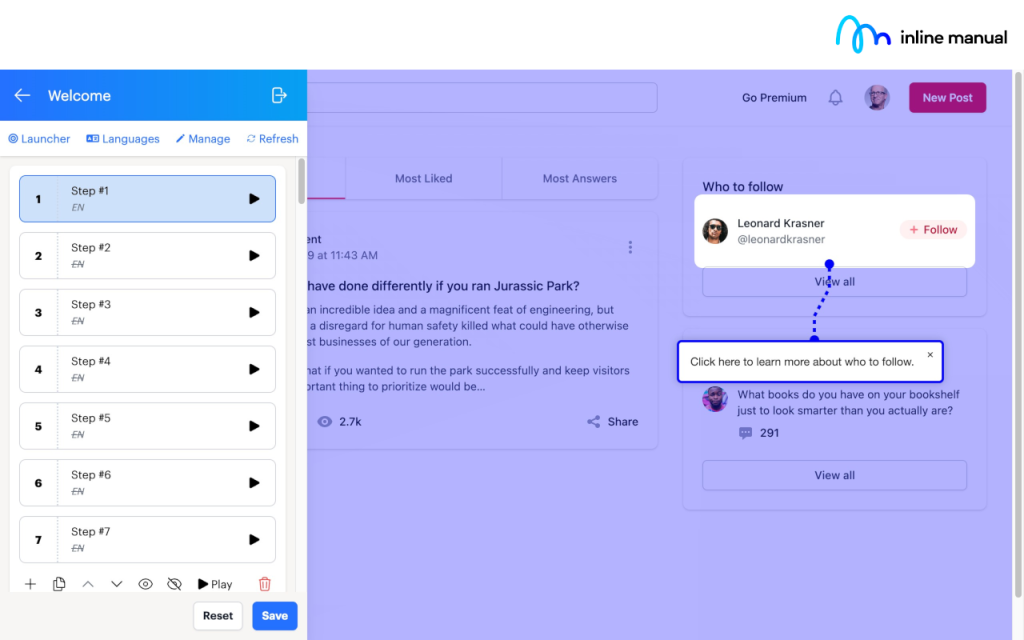
Inline Manual approaches onboarding with a focus on flexibility and precision. Their version control system is decent – you can store and manage different versions of your onboarding content, which is crucial as your product evolves.
One of the most incredible features is what they call “branching.” This lets you create different paths through your product based on users’ actions. For example, someone who clicks on feature A might see a different set of instructions than someone who clicks on feature B. It’s like creating a customized journey for each user. Users can share their thoughts and report issues directly through the system, which helps you continuously improve your onboarding process.
Userflow
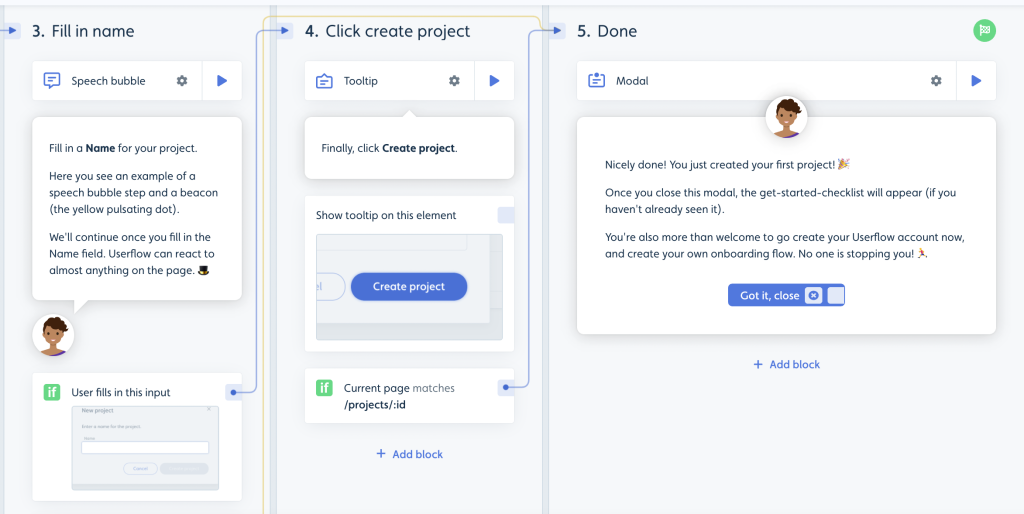
Userflow brings a fresh, modern approach to user onboarding. It focuses on creating onboarding experiences that feel natural and unobtrusive. The platform lets you build flows that guide users through your product without making them feel like they’re being hand-held. It’s like having a friendly expert who appears precisely when needed and steps back when they don’t.
You can create anything you need for onboarding – product tours, checklists, surveys, tooltips, you name it – all without touching a line of code. The flow editor is visual and intuitive, allowing you to design complex user journeys by dragging and dropping elements. Want to create a guided tour that adapts based on what users click? Or maybe a checklist that updates as users complete tasks? Userflow makes it surprisingly easy.
Conclusion
While Pendo offers robust features for client onboarding, its competitors provide unique advantages that might better suit your specific needs. Want to take the next step? Start with a free trial of FuseBase or WalkMe.
FuseBase offers comprehensive collaboration features, Whatfix provides multilingual support, and Inline Manual offers sophisticated version control. The key is aligning your choice with your organization’s requirements and goals. Great customer onboarding isn’t just about having the fanciest tool – it’s about creating a smooth, welcoming experience for your new customers. Pick the tool that helps you do that best, and you’ll be well on your way to building stronger customer relationships.
